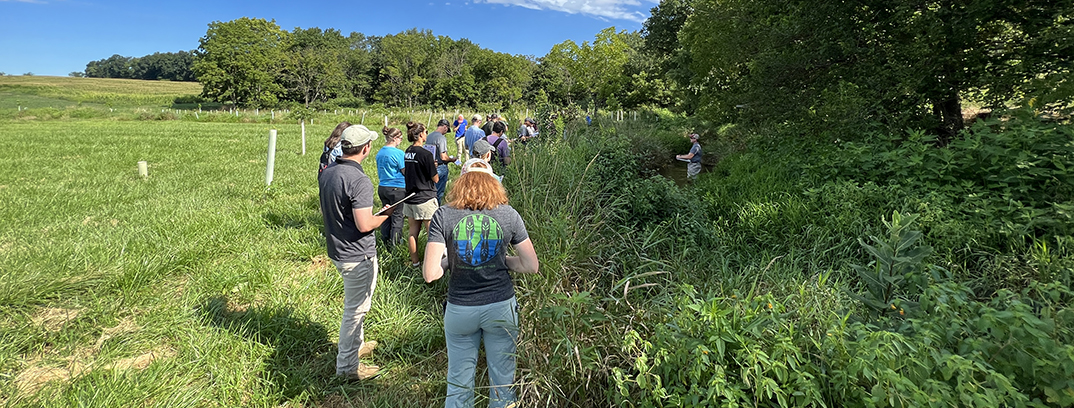Protecting Riparian Buffers from Strong Storms

Protecting Riparian Buffers from Strong Storms
The increasing severity and longevity of storms is concerning. Not only is it dangerous for our planet and communities, but also for our trees – especially newly planted, streamside trees called riparian forest buffers. These newly planted buffers are vulnerable during strong storms when waters rise high above their tops and strong winds test their roots.
In early September, Hurricane Ida hit our region, leaving severe flooding, power-outages, and property damage. A landowner along the Conestoga River in Lancaster Township saw his buffer eaten away by high, fast-moving waters. Nearly half of the trees were bent, completely broken, or washed away from that single storm. Luckily, a group of dedicated volunteers and technical service providers helped the landowner clean up the debris, salvage some trees, and replant where needed.
Increasingly severe storms is not a passing trend for our world, so it’s vital to protect buffers before a storm even hits. Here are three tips for preparing and protecting buffers for severe storms:
Use sturdy stakes and check them often: Anchor stakes alongside the upstream side of the tube and tree. This ensures that the main force of the flood water is hitting the stake first instead of the tube which increases the likelihood that the tree will survive.Also, soil can shift over time, so take a moment to hammer in the stakes deeper if they appear loose or wobbly. Fiberglass stakes have been a popular option and prove very sturdy overtime.
Let the grass grow a bit!: Mowing the grass to about 4 inches around the buffer will help slow down fast-moving water and keep the soil in place. Properties that mow a buffer similarly to mowing a lawn will result in increased erosion and buffer damage. Mowing only needs to be done 2-3 times a year.
Continue seasonal maintenance: Consistent maintenance efforts, such as checking and adjusting tree tubes and stakes, spraying herbicide, clearing debris surrounding the tree, weeding, and mowing, can have dramatically beneficial effects for newly planted trees, especially during a severe storm. The healthier the tree, the more natural defenses it has against strong storms.
Do you need assistance with tree care or maintenance? For more tips and assistance, contact Bryce Workman, Water Resource Technician at the Lancaster County Conservation District.


















